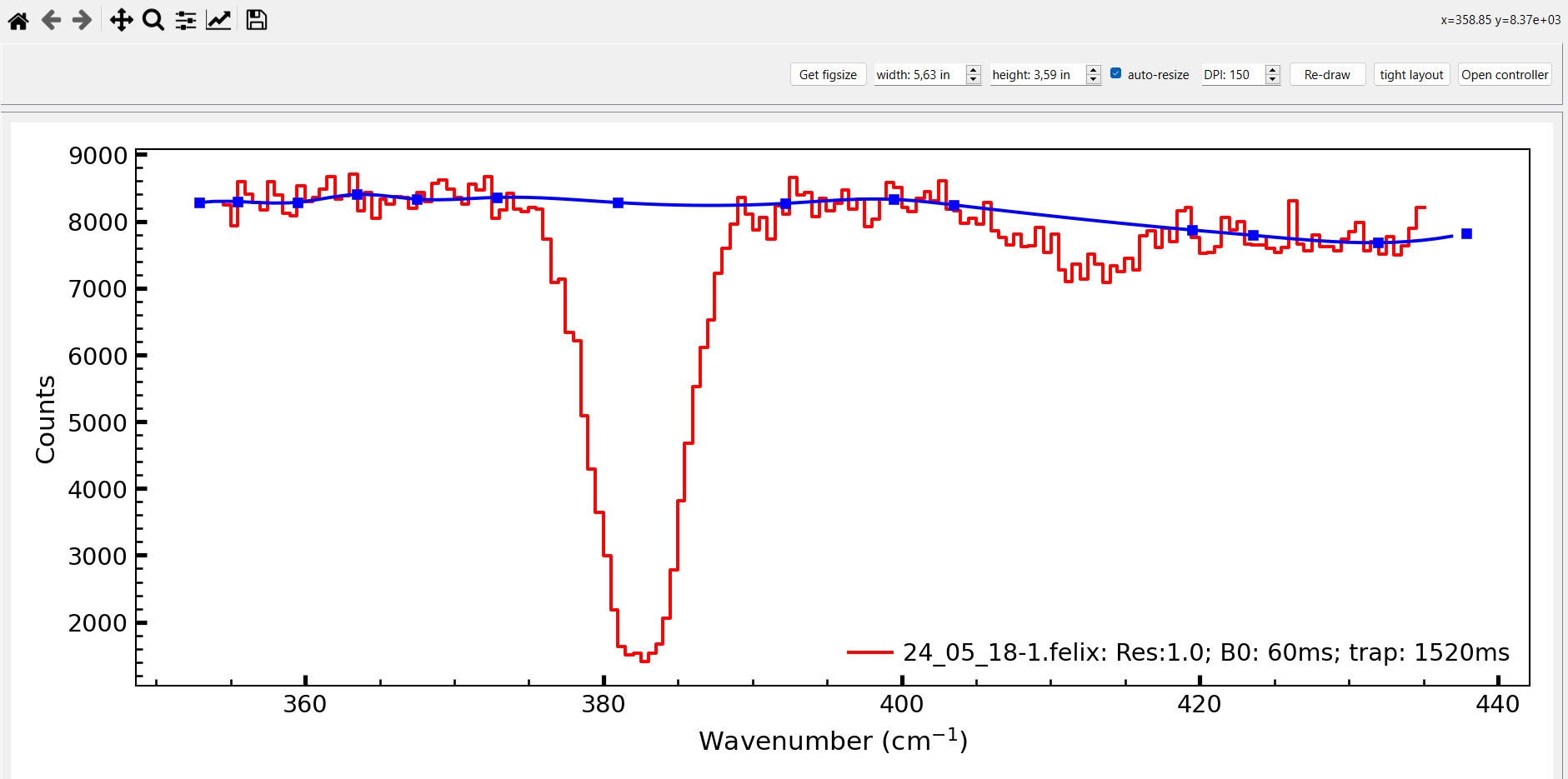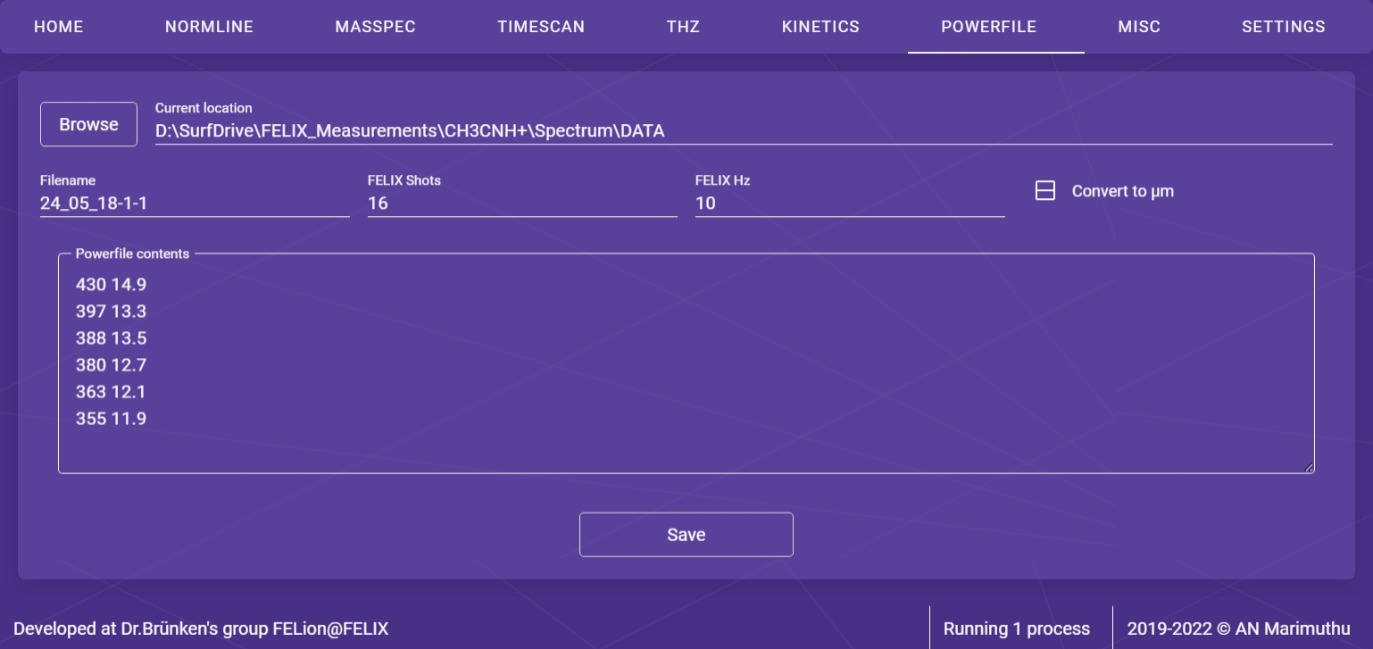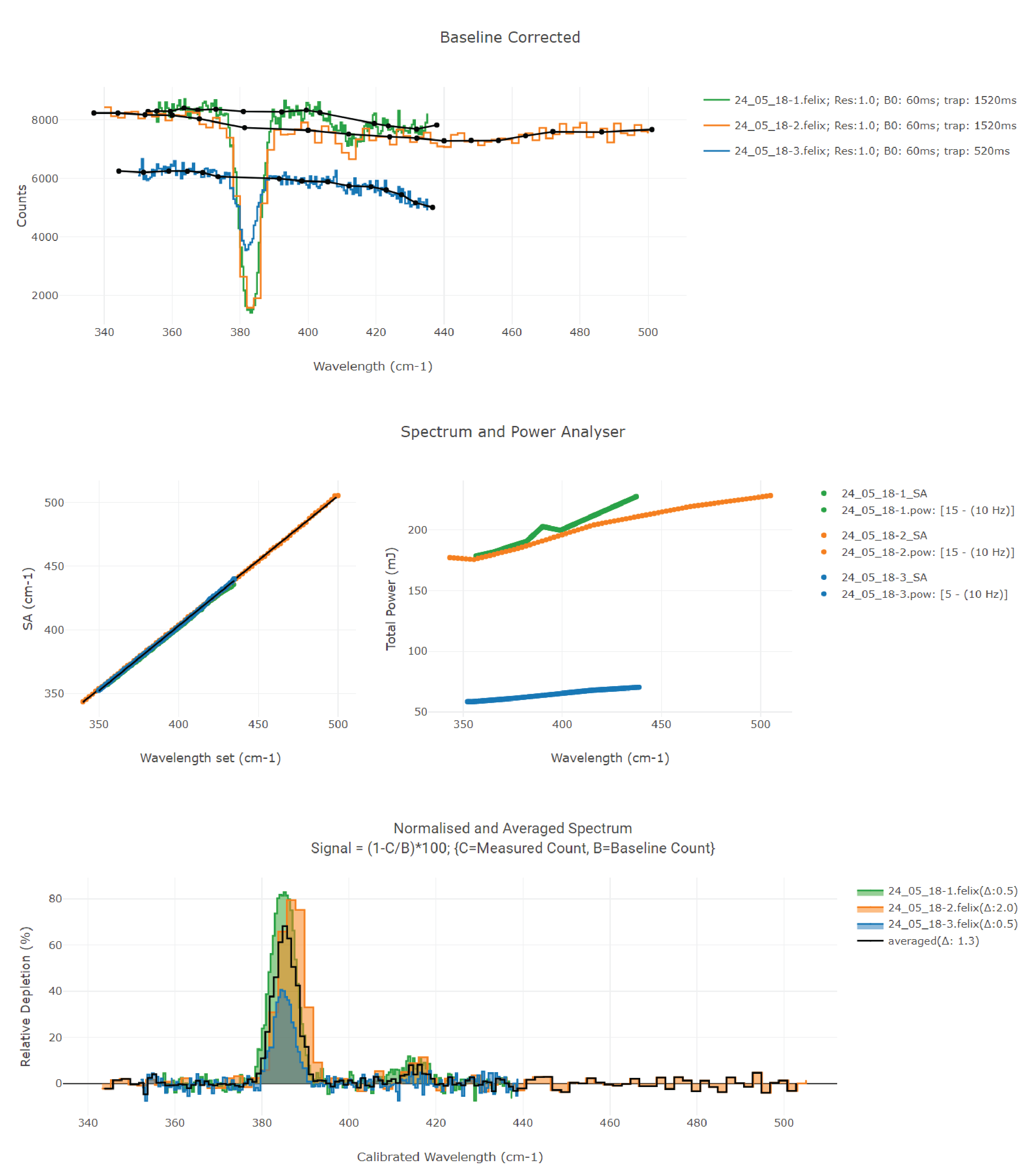Normline
Normline is the page where analysis of FELIX and OPO infrared data are processed such as baseline correction, wavelength and power calibration In addition, one can do post-processing such as Gaussian and Multi-Gaussian line profile fitting fitting of experimental data to derive line parameters (FWHM, \(\sigma\) and amplitude).
Before proceeding further, let us familirise with different data folder structure and processed and post-processed data types for FELIX and OPO IR data.
Folder structure
graph TD
Parent[parent-folder]
Parent --> DATA
Parent --> EXPORT
Parent --> OUT
DATA --> felix[.*felix]
DATA --> .pow
DATA --> .base
EXPORT --> .dat
OUT --> .expfit
OUT --> .fullfit
OUT --> other[.png, .pdf, etc]
file types
.*felix indicates any of the following: .felix, .ofelix, .cfelix or .cofelix file
Data types
| Name | Description | Data source |
|---|---|---|
| FELIX | ||
| .felix | FELIX IR data | Instrument (Labview) |
| .cfelix | corrected felix | created manually (FELionGUI) |
| .pow | powerfile for felix | created manually (FELionGUI) |
| .base | baseline for felix | created manually (FELionGUI) |
| OPO | ||
| .ofelix | OPO IR data | Instrument (Labview) |
| .cbase | baseline for OPO | created manually (FELionGUI) |
| .cofelix | corrected ofelix | created manually (FELionGUI) |
| Post-processed | ||
| .dat | processed .*felix data | created manually (FELionGUI) |
| .expfit | Gaussian fit parameters | created manually (FELionGUI) |
| .fullfit | Multi-Gaussian fit parameters | created manually (FELionGUI) |
Step-by-step procedure
Create baseline
Creating baseline for felix or opo IR spectrum
The procedure of processing the data are as given below in flowchart:
graph LR
baseline[Create baseline] --> data[FELIX or OPO plot] --> post[Post processing]As shown in above flowchart, the first step is to create a baseline
Initial steps
The measured .*felix file is copied into a folder (called parent folder as mentioned in above flowchart) followed by baseline creation Create baseline.
If the parent folder is empty the following directories DATA, EXPORT and OUT are automatically generated and the copied .felix or .ofelix files are copied into the DATA folder.
Baseline file selection
Normally files are selected by mouse left-click. However, to select a file for creating baseline one has to do ctrl + left-click.
As shown in Fig 3, selected files are indicated by and the selected file for baseline correction has a solid orange coloured border.
Baseline creation
If the parent-folder is empty and this is the first time you are processing the file, then after baseline creation you should refresh () and move into DATA folder.
Baseline adjustment
As shown in Fig 4, the red coloured line is th measured FELIX data. While the blue coloured line corresponds to baseline which can be adjusted by dragging the solid-squared-blue-box.
The baseline is basicallya cubic spline extraploation w.r.t solid-squared-blue-box. The solid-squared-blue-box can be added or deleted, and the measured data (red coloured) can also be deleted and saved as a corrected felix file (.cfelix).
The addition and deletion can be applied when mouse is hovered over the region of interest followed by keyboard keys as shown in Table below.
| keys | description |
|---|---|
a |
add solid-squared-blue-box point |
d |
delete solid-squared-blue-box point |
x |
delete measured-data point |
z |
undo deleted measured-data point |
r |
redo deleted measured-data point |
FELIX
Powerfile
Create powerfile (.pow) for corresponding (.felix) file
Powerfile saving
Don't leave an empty line at the end of the powerfile. It might cause an error.
FELIX plot
graph LR
baseline[Create baseline] --> powerfile --> felix[FELIX plot] --> post-processAs shown above, once baseline is created click on FELIX plot button to analysis FELIX IR data (from .felix file).
OPO
graph LR
opomode[OPO MODE] --> baseline[Create baseline] --> opo[OPO plot] --> post-process


